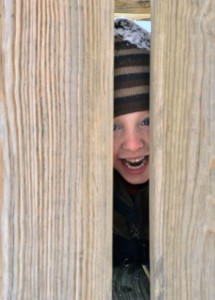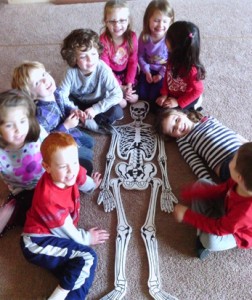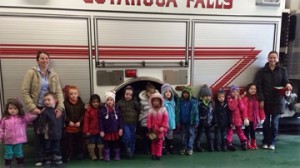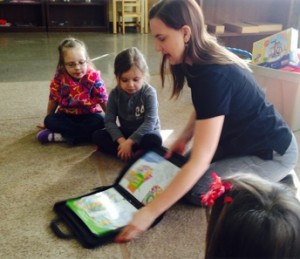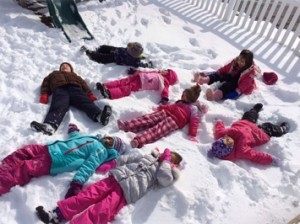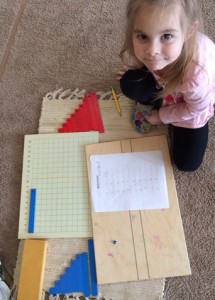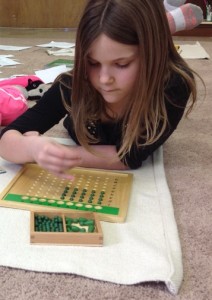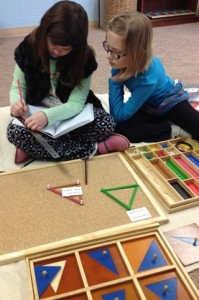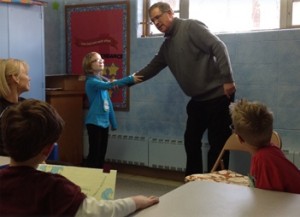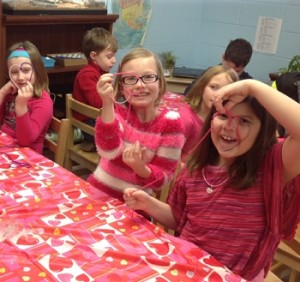Cuyahoga Falls School
Line Time Lessons
Ms. Dana and Ms. Kathleen have never missed a beat and are a great support to me in the classroom; we can’t believe we are heading into the home stretch! It has been a great year together and with your children!
To begin this month, we visited the Ancient Romans and found they wore the toga, built the coliseum, and their most famous person was Julius Caesar. Our students had fun one afternoon building their own Roman Arches from sugar cubes. Our students were very fascinated by Roman Mythology. We learned the Greeks Gods had Roman counterparts.
 Jupiter was the king of all Gods. The God of the sea was named Neptune and the God of the Underworld was known as Pluto. The God of War was named Mars. Goddesses existed as well. Juno was the queen of all Goddesses. Venus was the Goddess of Love. Minerva was the Goddess of Wisdom. Many students noticed that many of the Gods were named after planets or the planets were named after the Gods. Mythical creatures existed such as the faun. The faun was a creature that was half man/ half goat. The griffin was the most interesting to the students. It was a creature that had a head and wings of an eagle and the body of a lion. It was known to guard treasures and built their nests out of gold.
Jupiter was the king of all Gods. The God of the sea was named Neptune and the God of the Underworld was known as Pluto. The God of War was named Mars. Goddesses existed as well. Juno was the queen of all Goddesses. Venus was the Goddess of Love. Minerva was the Goddess of Wisdom. Many students noticed that many of the Gods were named after planets or the planets were named after the Gods. Mythical creatures existed such as the faun. The faun was a creature that was half man/ half goat. The griffin was the most interesting to the students. It was a creature that had a head and wings of an eagle and the body of a lion. It was known to guard treasures and built their nests out of gold.
We then learned a little about pollution. Pollution is something that is harmful to our environment. Some students used the word “toxic” to the environment. We learned that “ground pollution” was known as litter. We know not just to toss a plastic bottle or a candy wrapper on the ground but instead put it in a trash can or recycle. Water pollution can come from oil spills or factories dumping their toxic waste into the water. Fish and other water creatures such as ducks do not like this. Air pollution is caused by factories and cars. We all agreed any kind of pollution is gross, disgusting, and probably smells. And no one thought noise pollution was good for the environment.

Students have also been talking about what it means to be a friend with Ms. Dana and Ms. Kathleen in the afternoon and enjoyed working together to build a friendship web. This is a group activity that teaches our students how to communicate their feelings, and pick out positive characteristics in people.We then dove into the ocean and found the oceans are all salt water and have some pretty cool animals. We all knew there were water mammals such as dolphins, and whales. There are also some invertebrates such as the octopus, squid and seahorse. We know that the oceans and any water forms are very important to the Earth. We get our water, food and oxygen from our water forms.

We also took a field trip to the Art Museum this month! Thank you to all of our parents who volunteered to drive and help us at our visit. It was a great trip!
Our classroom was visited this month by some very mischievous leprechauns. We were greeted by tipped tables, stacked chairs, and paper strewn across the room. Although the room was a mess the cheeky little leprechauns did leave gold coin candy for the children to take home!
Cultural Subjects
The class has been counting to 10 in twenty-eight different languages, English (that is our native language), Spanish, Sign Language, German, French, Japanese, Greek, Arabic w/Lebanese dialect, Italian, Romanian, Russian, Hebrew, Swedish, Korean, Polish, Hungarian, Tagalog, Hebrew, Korean, Polish, Irish, Kiswahili, Welsh, Dutch/Flemish, Serbo-Croatian, Cebuano, Malay, and Hindi.Kindergarten Lesson
We ended our math unit by learning more shapes such as the quatrefoil, oval, and ellipse. We looked at some three dimensional shapes such as the ovoid, ellipsoid, rectangular and triangular prisms, square and triangle based pyramids.We began our grammar unit by learning our five vowels and what isn’t a vowel is a consonant. Then we looked at the noun and verb. Nouns are people, places, and things. Verbs are action words or something you can do. Even if you sleep….. Sleep is a verb!
The Kindergartners now can count to 10 in twenty-eight languages…English (that is our native language), Spanish, Sign Language, German, French, Japanese, Greek, Arabic w/Lebanese dialect, Italian, Romanian, Russian, Hebrew, Swedish, Korean, Polish, Hungarian, Tagalog, Hebrew, Korean, Hungarian, Polish, Irish, Kiswahili, Welsh, Dutch/Flemish, Serbo-Croatian, Cebuano, Malay, Hindi.

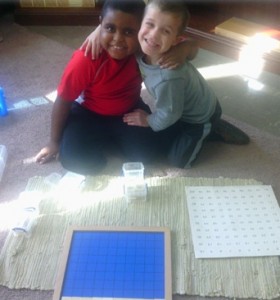
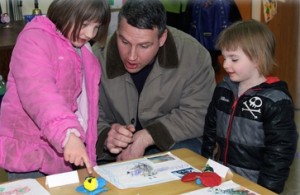
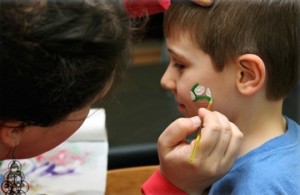
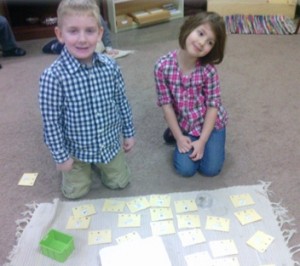
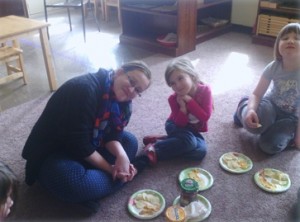

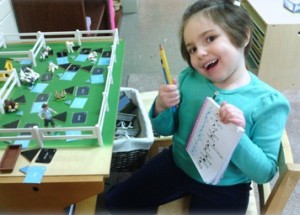
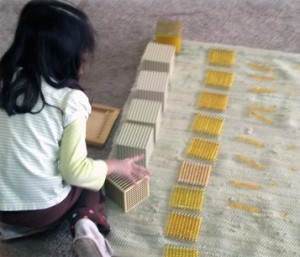
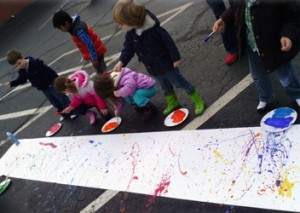
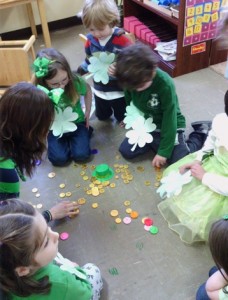
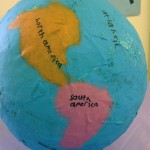
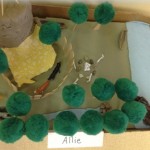
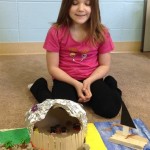
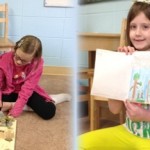
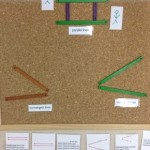
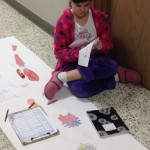
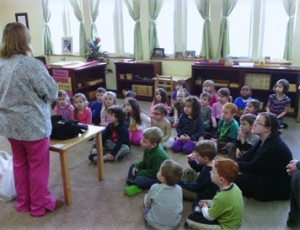
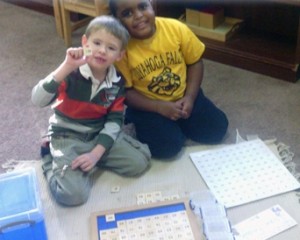
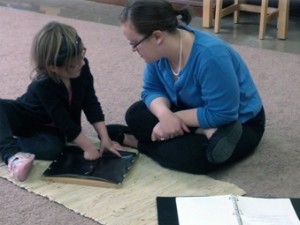
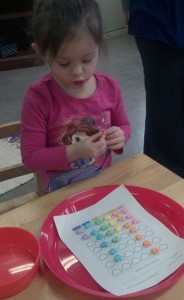


 The third week of February the children learned how Washington was a great man, the father of our country, who led in war and peace. They discovered that Abraham Lincoln is on the penny with the help of field students from the University of Akron. The children talked about what they think life is like for the Obama family in the White House. For science we inflated balloons using lemon juice and baking soda and the children learned when you mix the two together it creates carbon dioxide and the gas rises up and escapes the bottle feeling the balloon.
The third week of February the children learned how Washington was a great man, the father of our country, who led in war and peace. They discovered that Abraham Lincoln is on the penny with the help of field students from the University of Akron. The children talked about what they think life is like for the Obama family in the White House. For science we inflated balloons using lemon juice and baking soda and the children learned when you mix the two together it creates carbon dioxide and the gas rises up and escapes the bottle feeling the balloon.

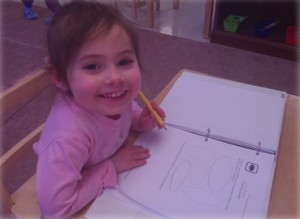
 The following week we learned about George Washington and how he was our first president and how Abraham Lincoln came from a poor family and freed the slaves. We were introduced to Franklin F. Roosevelt and how he was president during World War II and how John F. Kennedy fought for equal rights. We then learned that Barack Obama was current president and the first African American president. The children were taught that the president’s wives are called the first lady and that the president lives in the white house in Washington DC, and flies on a jet called Air Force 1. We discussed what responsibilities the President has. The children came up with keeping us safe, keeping the world safe and running the country. Many coloring pages were used as well as coloring pages to help identify which president is on what coin.
The following week we learned about George Washington and how he was our first president and how Abraham Lincoln came from a poor family and freed the slaves. We were introduced to Franklin F. Roosevelt and how he was president during World War II and how John F. Kennedy fought for equal rights. We then learned that Barack Obama was current president and the first African American president. The children were taught that the president’s wives are called the first lady and that the president lives in the white house in Washington DC, and flies on a jet called Air Force 1. We discussed what responsibilities the President has. The children came up with keeping us safe, keeping the world safe and running the country. Many coloring pages were used as well as coloring pages to help identify which president is on what coin.
 lightning bolt at you. We went to the depths of the ocean and met Poseidon. Poseidon was the god of the seas. He rode a chariot pulled by horses and carried a trident. Stay on the good side of him if you want to sail safely across the ocean. Then we met Hades the god of the underworld and of the dead. He liked when people died because he thought he would be stronger with more people to rule and he had a three headed dog on a leash. We discovered there were some very interesting mythical creatures in ancient Greece, the Centaur that had the body of a horse and chest and head of a man. The Cyclopes were giant one eyed creatures who fought for Zeus and made Zeus’s lightning bolts. Finally we learned the name of the three headed dog of Hades. It was known as Cerberus and it guarded the gates of the underworld.
lightning bolt at you. We went to the depths of the ocean and met Poseidon. Poseidon was the god of the seas. He rode a chariot pulled by horses and carried a trident. Stay on the good side of him if you want to sail safely across the ocean. Then we met Hades the god of the underworld and of the dead. He liked when people died because he thought he would be stronger with more people to rule and he had a three headed dog on a leash. We discovered there were some very interesting mythical creatures in ancient Greece, the Centaur that had the body of a horse and chest and head of a man. The Cyclopes were giant one eyed creatures who fought for Zeus and made Zeus’s lightning bolts. Finally we learned the name of the three headed dog of Hades. It was known as Cerberus and it guarded the gates of the underworld.

 We then learned about different shapes. We knew that a triangle has three sides but we learned that a triangle with three equal sides is called an equilateral triangle, with two equal sides is an isosceles, and with no equal sides it is called a scalene triangle. Any shape with four sides is a quadrilateral. Some examples include a square, rectangle, rhombus, trapezoid, and a chevron. We realized that the Greek language was very important when learning about the pentagon, hexagon, heptagon, octagon, nonagon, and decagon.
We then learned about different shapes. We knew that a triangle has three sides but we learned that a triangle with three equal sides is called an equilateral triangle, with two equal sides is an isosceles, and with no equal sides it is called a scalene triangle. Any shape with four sides is a quadrilateral. Some examples include a square, rectangle, rhombus, trapezoid, and a chevron. We realized that the Greek language was very important when learning about the pentagon, hexagon, heptagon, octagon, nonagon, and decagon.